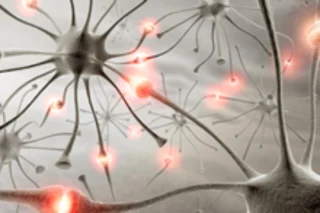Experiments conducted on squid brains in the early days of neuroscience created misunderstandings about the workings of the human brain that have persisted for 70 years, according to a new study. While the squid experiments did shed light on how messages are transmitted between brain cells with electrochemical signals (and led to a Nobel Prize for the experimenters), researchers are just now realizing that the results gave scientists a confused idea about the efficiency of neurons. The story begins seventy years ago when
a pair of British physiologists, Alan Hodgkin and Andrew Huxley, took the first stab at figuring out how neurons transmit electrical signals, known as action potentials. Because most neurons are small--in humans, a cubic millimeter of gray matter can contain 40,000 neurons--the duo turned to squid, which contain a giant axon, the long thin part of a neuron through which action potentials travel [ScienceNOW Daily News].
Those ...














